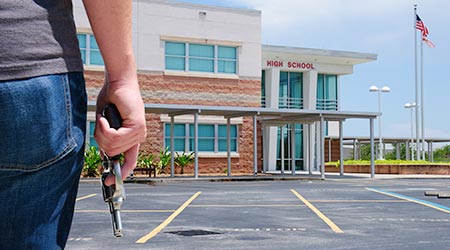
K-12 Schools: Security vs. Maintenance
August 29, 2018
Everything has a price, as maintenance and engineering managers in institutional and commercial facilities know better than most. Managers have operated for decades under the strategy of “doing more with less.”
So as the general public and school district officials nationwide try to find answers to the ongoing attacks by active shooters on K-12 schools, managers are trying balance school security needs with their ongoing maintenance and repair needs.
For one state, the decision-making process is playing out in public. The Kenny Guinn Center for Policy Priorities, a nonprofit, bipartisan research and policy analysis center, looked into the costs of implementing security measures in Nevada schools, from installing surveillance cameras and metal detectors to X-ray baggage scanners, identification cards and more, according to the Las Vegas Sun.
The Statewide School Safety Task Force, made up of superintendents, school teachers, parents and others will report with security measure recommendations. In the fall, the group will offer long-term recommendations to improve safety in Nevada’s schools, budgetary requests and more. “We thought it would be interesting to put a price tag on security related to the school buildings,” says Nancy Brune, the center’s executive director. “Ground the conversation in some reality about how much these costs could be or about how high they may run.”
The report also compares the cost of implementing potential security measures with the costs needed for the repairs on the campuses across the state. Because of limited resources, the report explores whether using funds for security measures is the best use of funds versus ensuring the physical stability of their school’s infrastructure.
As of 2016, the Clark County School District reported that 50 percent of its school buildings are more than 20 years old. In five years, that number will jump to 62 percent. Sixteen schools met the requirements for replacement based on the ratio of renovation cost to replacement value. “It’s this weighing of priorities, Brune says. “Do you fund cameras? Do you fund teachers or instructional materials? We should be concerned about student outcomes and we have to ask what is the relationship between these safety and security technologies and student outcomes. It may make more sense to focus on prevention as opposed to security technology.”
This Quick Read was submitted by Dan Hounsell — dan.hounsell@tradepressmedia.com — editor-in-chief of Facility Maintenance Decisions, and chief editor of Facilitiesnet.com.
Next
Read next on FacilitiesNet












